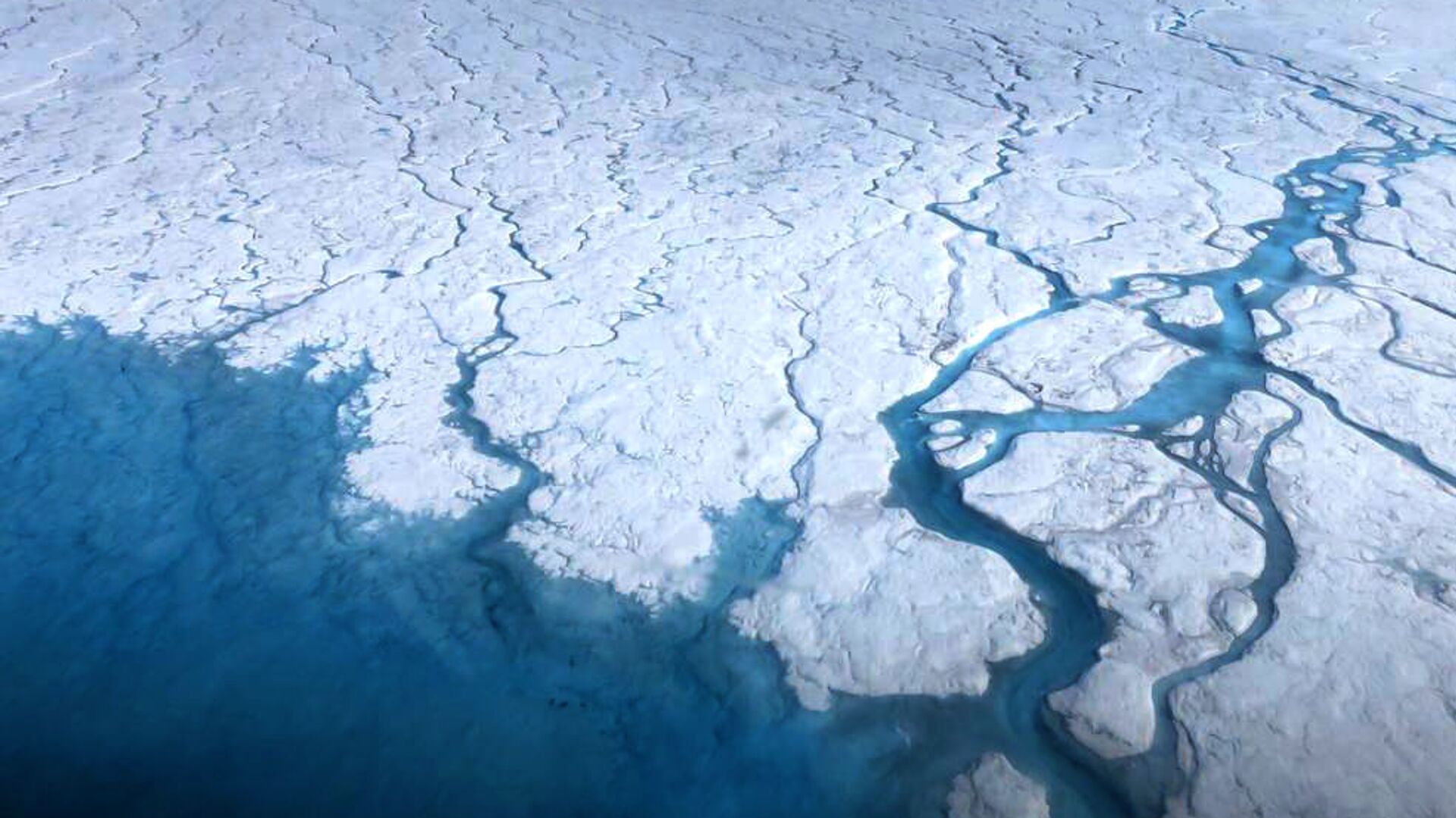https://sputnikglobe.com/20231108/greenland-lost-over-one-third-of-floating-ice-shelves-in-last-50-years-1114828025.html
Greenland Lost Over One-Third of Floating Ice Shelves in Last 50 Years
Greenland Lost Over One-Third of Floating Ice Shelves in Last 50 Years
Sputnik International
Greenland, home to a vast amount of water ice locked away in glaciers and an ice cap, has lost more than one-third of a key part of this icy deposit: its floating glaciers and ice shelves that keep the ocean waters away from ice.
2023-11-08T22:10+0000
2023-11-08T22:10+0000
2023-11-08T22:09+0000
world
greenland
ice
glacier
sea ice
climate change
https://cdn1.img.sputnikglobe.com/img/07e5/08/1b/1083735397_0:31:985:585_1920x0_80_0_0_6305ed4e4b32d49d0bf1736ee8737b00.jpg
In a study published on Tuesday in Nature Communications, a group of American and Danish scientists described the precipitous drop in their volume.What they found is that since 1978, roughly 400 billion tons of floating ice around Greenland has disappeared, accounting for 35% of the total floating sea ice around the massive island.“The retreat of grounding lines and increased ice discharge are clear signs of a weakening ice shelf system,” Lhermitte added.The massive ice shelves are by themselves capable of triggering a rise in ocean levels of roughly 3.6 feet if they totally melted, which would put in danger hundreds of millions of people who live in coastal cities and regions. However, the ice shelves play a highly important role in protecting the vast Greenland Ice Cap from ocean waters, which could cause that ice cap to begin melting a lot quicker. The ice cap is nearly a mile thick and covers the whole interior of the island, and if it melted, it could raise sea levels by an astonishing 23 feet.Scientists say the planet must be limited to a global increase of less than 1.5 degrees Celsius by the end of the century to avoid such a catastrophe. However, that could come a lot sooner than expected: a recent study found the average temperature on Earth over the last decade was about 1.1 degrees Celsius higher than pre-industrial temperatures.
https://sputnikglobe.com/20231008/melting-ice-reveals-rare-find-horseshoe-and-bridle-possibly-belonging-to-viking-warriors-1114010723.html
greenland
Sputnik International
feedback@sputniknews.com
+74956456601
MIA „Rossiya Segodnya“
2023
News
en_EN
Sputnik International
feedback@sputniknews.com
+74956456601
MIA „Rossiya Segodnya“
Sputnik International
feedback@sputniknews.com
+74956456601
MIA „Rossiya Segodnya“
greenland ice sheet; glaciers; global warming; climate change
greenland ice sheet; glaciers; global warming; climate change
Greenland Lost Over One-Third of Floating Ice Shelves in Last 50 Years
Greenland, home to a vast amount of water ice locked away in glaciers and an ice cap, has lost more than one-third of a key part of this icy deposit: its floating glaciers and ice shelves that keep the ocean waters away from most of the ice.
In a
study published on Tuesday in Nature Communications, a group of American and Danish scientists described the precipitous drop in their volume.
What they found is that since 1978, roughly 400 billion tons of floating ice around Greenland has disappeared, accounting for 35% of the total floating sea ice around the massive island.
“The implications of these findings are profound, as they reveal a direct connection between ice shelf changes and the dynamics of Greenland’s glaciers,” Stef Lhermitte, a scientist specializing in satellite observations of glaciers at the Delft University of Technology in the Netherlands who was not involved in the study, told US media.
“The retreat of grounding lines and increased ice discharge are clear signs of a weakening ice shelf system,” Lhermitte added.

8 October 2023, 04:01 GMT
The massive ice shelves are by themselves capable of triggering a rise in ocean levels of roughly 3.6 feet if they totally melted, which would put in danger hundreds of millions of people who live in coastal cities and regions.
However, the ice shelves play a highly important role in protecting the vast Greenland Ice Cap from ocean waters, which could cause that ice cap to begin melting a lot quicker. The ice cap is
nearly a mile thick and covers the whole interior of the island, and if it melted, it could raise sea levels by an astonishing 23 feet.
Before the 1980s, Greenland’s ice sheets were considered to be mostly stable, but as human-driven climate change has accelerated, so has the ice sheets’ retreat alongside much of the polar sea ice. The sea ice not only stores water in a solid form, it also reflects a lot more sunlight, helping to slow the warming of the planet. Less ice means more heating.
Scientists say the planet must be limited to a global increase of less than 1.5 degrees Celsius by the end of the century to avoid such a catastrophe. However, that could come a lot sooner than expected: a recent study found the average temperature on Earth
over the last decade was about 1.1 degrees Celsius higher than pre-industrial temperatures.



